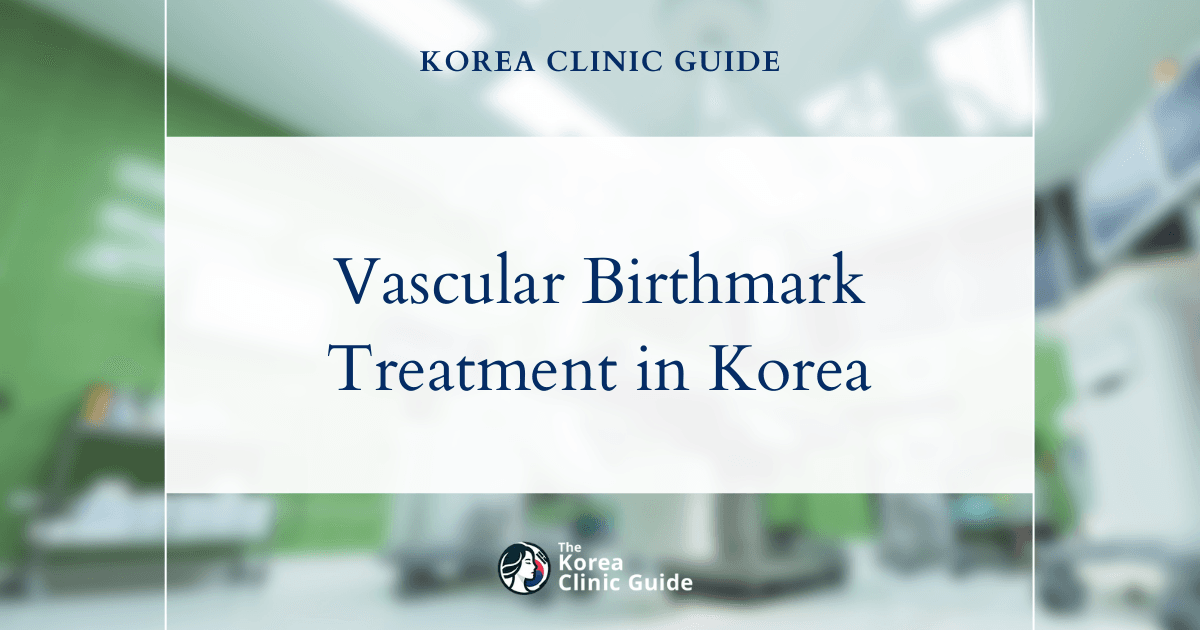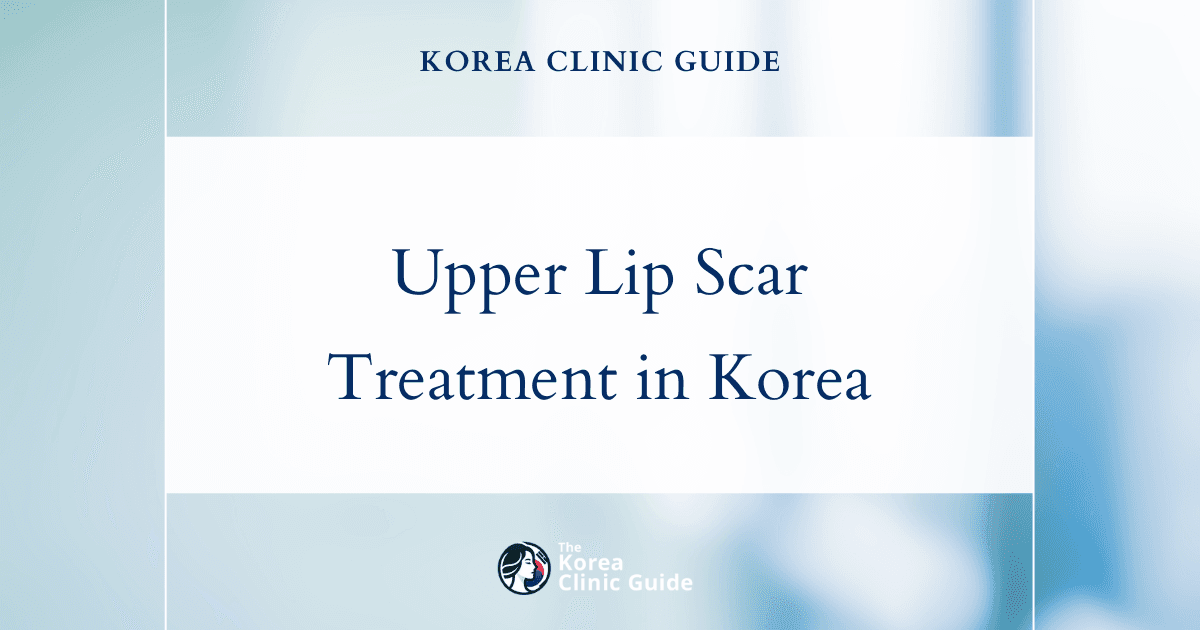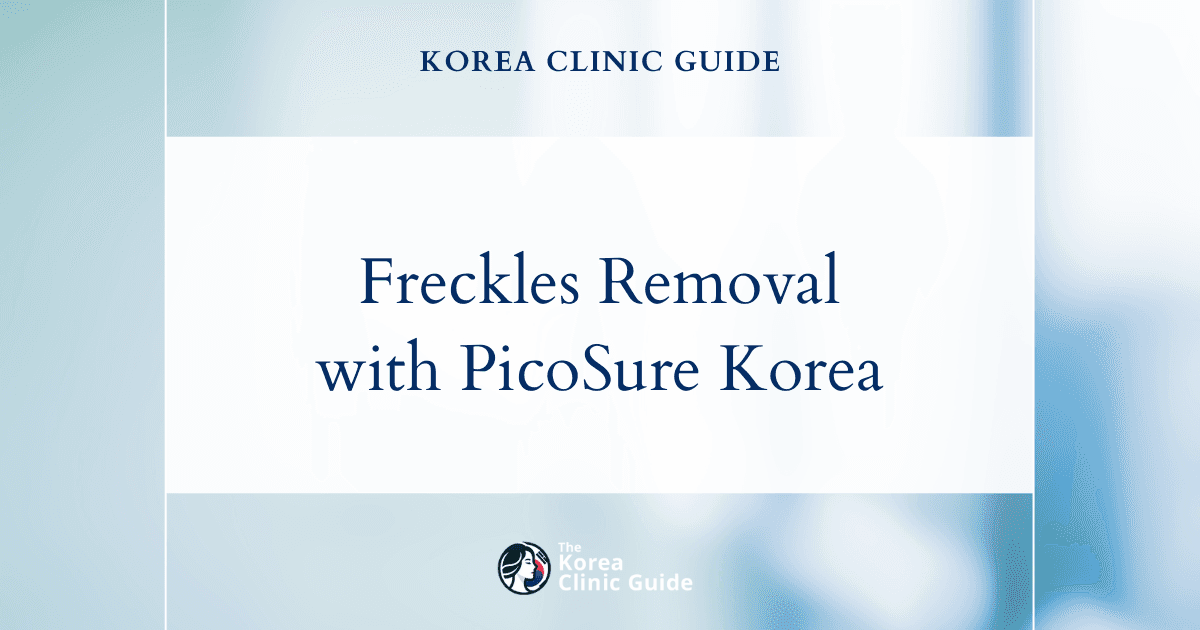Medical Tourism Blog
Discover Expert Lipoma Removal Procedures in Korea for Effective Lipoma Removal Needs

Table of contents
- Detailed Medical Procedures for Lipoma Removal
- Best Clinics in Korea
- Navigating Lipoma Removal as a Medical Tourist in South Korea
- Cost Analysis: Lipoma Removal in South Korea vs. Other Countries
- Patient Experiences and Long-Term Outcomes of Lipoma Removal
- Important Considerations for Patients
- Conclusions
- References
This guide is designed to help patients understand lipoma removal, also known as benign fatty lump excision. It combines current medical knowledge, detailed procedural information, cost comparisons for medical tourists, and insights into patient experiences and long-term outcomes.

Definition and Characteristics of Lipomas
Lipomas are common, benign lumps made of fatty tissue that grow slowly just beneath the skin, usually between the skin and muscle layers. They feel soft, rubbery, or doughy and can be easily moved with gentle finger pressure, setting them apart from harder, less mobile lumps. Most lipomas are small, about 1 to 2 inches (3 to 5 centimeters) in diameter, but some can grow larger, even as big as a fist.
These lumps can appear anywhere on the body but are most often found on the neck, shoulders, back, abdomen, arms, and thighs. Rarely, lipomas develop deeper in muscles, internal organs, or the brain. While many people have just one lipoma, some develop multiple. Lipomas are encapsulated, meaning they are enclosed in a thin capsule and do not spread to nearby tissues.
The exact cause of lipomas is unknown, but they often run in families, suggesting a genetic link. They are most commonly found in people aged 40 to 60. Usually painless, lipomas can cause discomfort if they press on nerves, are near joints, or contain many blood vessels, as seen in angiolipomas.
Besides the typical lipoma made of white fat cells, there are variants like angiolipoma (fat and blood vessels, often painful), fibrolipoma (fat and fibrous tissue), hibernoma (brown fat), myelolipoma (fat and blood cell-producing tissue), spindle cell, and pleomorphic lipomas (with uniquely shaped fat cells).
Common Pseudonyms for Lipomas
When researching lipomas, you might encounter terms like "Fatty Tumor," "Fatty Tumors," "Lipomas," "Lipomata," "Lipomatas," "Tumor, Fatty," and "Tumors, Fatty."
Some conditions feature lipomas as part of their symptoms. For example, Dercum's disease, a rare disorder with multiple painful fatty growths, is also called "adiposis dolorosa," "fatty tissue rheumatism," "juxta-articular adiposis dolorosa," "lipomatosis dolorosa," or "morbus Dercum's." Angiolipomatosis, involving painful lipomas rich in blood vessels, is sometimes linked to Dercum's disease. Other conditions like Madelung's disease (multiple symmetric lipomatosis), Proteus syndrome, PTEN hamartoma syndrome, and Gardner syndrome also involve lipoma development.
Reasons for Lipoma Removal (Medical and Cosmetic)
Though lipomas are benign and often don't need treatment, many choose removal for various reasons.
The main medical reason is pain or discomfort, especially if the lipoma presses on nerves, muscles, or joints. Painful angiolipomas are a clear example. Conditions like Dercum's disease, with multiple painful lipomas, often require treatment.
Rapid growth or changes in the lipoma, such as becoming hard or less movable, are also important signs to seek removal. While lipomas rarely turn cancerous, these changes need evaluation to rule out malignancies like liposarcoma, a rare fatty cancer that can resemble a benign lipoma.
Cosmetic concerns are common reasons for removal. Large or visible lipomas can affect self-esteem and body image. Additionally, functional impairment from large or deep lipomas can interfere with movement or daily activities. Less common reasons include tenderness, foul-smelling discharge, swelling, or infection.
Always consult a healthcare professional if you notice a new lump or changes in an existing one.
Deeper Understanding of Patient Needs
Medical literature often describes lipomas as "benign" and "harmless," but patients' reasons for removal go beyond this. An unexplained lump can cause significant anxiety. The need to rule out rare but serious conditions like liposarcoma means even harmless lumps require professional evaluation. This diagnostic caution, combined with worry about an unknown growth, drives many to seek removal for peace of mind, not just symptom relief. Emotional well-being is a valid factor in deciding on removal.
Labeling lipoma removal as purely "cosmetic" oversimplifies the patient experience. While appearance matters, removal often improves quality of life by relieving physical discomfort, functional limits, and psychological distress like self-consciousness. For example, Dercum's disease causes severe pain and disability. Healthcare providers should recognize that removal can greatly enhance overall well-being.
Detailed Medical Procedures for Lipoma Removal
Lipoma removal involves several steps, from diagnosis to treatment options, each with pros and cons.
Pre-Procedure Diagnostics and Preparation
Before removal, a thorough evaluation ensures accurate diagnosis and treatment planning. A physical exam assesses the lump’s size, texture, and mobility.
If uncertain about the lump or if it’s large or deep, further tests may include:
- Ultrasound: Uses sound waves to image tissues beneath the skin, confirming if the lump is a lipoma.
- MRI or CT Scan: Offers detailed views of soft tissue, showing size, depth, and relation to nearby structures, crucial for ruling out liposarcoma.
- Biopsy: A small tissue sample may be taken if diagnosis is unclear.
Before surgery, the surgeon reviews medical history and medications. Blood thinners, anti-inflammatory drugs, and aspirin may need to be paused. Patients should report allergies and pre-existing conditions. For general anesthesia, fasting is required. Arranging transportation home and preparing a recovery area with ice packs and pillows is advised.
Surgical Excision (Traditional and Minimal Excision)
Surgical excision is the most common and reliable method to remove lipomas completely.
- Procedure: The surgeon makes an incision over the lipoma, carefully removes the lump and its capsule to reduce recurrence risk, then closes the incision with sutures. Sometimes a drain is placed temporarily.
- Anesthesia: Usually local anesthesia; general anesthesia may be used for larger or multiple lipomas.
- Duration: Typically 30 minutes to an hour, longer for complex cases.
- Recovery: Most resume light activities within a week and full activities in two weeks. Wound healing takes 2 to 3 weeks.
- Scarring: Some scarring is inevitable but minimized by skilled surgeons. Minimal excision uses smaller incisions for less visible scars.
- Benefits: Highest chance of complete removal and lowest recurrence risk. Suitable for large or deep lipomas and allows biopsy confirmation.
- Drawbacks: Leaves a scar and may require longer recovery than less invasive methods.
Liposuction
Liposuction is less invasive, ideal for smaller, softer lipomas or multiple lumps.
- Procedure: A small incision allows insertion of a cannula to break up and suction fat. Techniques like tumescent, laser-assisted, or ultrasound-assisted liposuction improve effectiveness.
- Anesthesia: Usually local.
- Duration: Often under 30 minutes, up to two hours for multiple lipomas.
- Recovery: Faster than surgery, with swelling and bruising lasting 1 to 3 weeks.
- Scarring: Small entry points cause minimal scarring.
- Benefits: Minimal scarring, quicker recovery, less invasive.
- Drawbacks: Higher recurrence risk if capsule isn’t fully removed; not suitable for fibrous or large deep lipomas.
Minimally Invasive Techniques
Newer methods use smaller incisions and specialized tools:
- Punch Excision: Removes small lipomas through tiny circular cuts, with minimal scarring.
- Endoscopic Removal: Uses a small camera and instruments through tiny incisions, ideal for large or deep lipomas.
- Laser-Assisted Lipolysis: Liquefies fat with laser energy before removal, reducing bruising and speeding healing.
- Radiofrequency Ablation: Destroys lipoma tissue with heat via a thin probe; good for small lipomas with minimal scarring, but long-term data is limited.
Non-Surgical Alternatives
Non-surgical options rarely remove lipomas completely and mainly manage symptoms or reduce size temporarily.
- Steroid Injections: Corticosteroids injected into the lipoma can shrink it over weeks. No incision or scarring, but multiple sessions may be needed and complete removal is unlikely.
- Cryotherapy: Freezes the lipoma with liquid nitrogen, causing shrinkage or disappearance. Suitable only for very small lipomas and may cause skin discoloration.
Deeper Understanding of Procedural Choices
Choosing a removal method balances complete removal and cosmetic outcomes. Surgical excision offers the lowest recurrence (1-2%) but leaves a scar and longer recovery. Liposuction and minimally invasive methods have less scarring and faster recovery but a slightly higher recurrence (~3%) due to incomplete capsule removal.
Pre-operative imaging like ultrasound, MRI, or CT scans is vital for safe, effective surgery. These provide a detailed map of the lipoma’s size, depth, and relation to nerves and vessels, reducing complications and improving removal completeness. This careful planning is essential for patient safety and optimal results.
Best Clinics in Korea
Listed below are the best clinics in Korea:
| Clinic Name | Key Features | Special Techniques |
|---|---|---|
| Renewme Skin Clinic - Dongdaemun | Comprehensive skin care services, personalized consultations by certified dermatologists, advanced medical technology, expert lipoma removal with focus on precision and patient comfort, open Monday through Saturday | Laser toning, RF lifting, HIFU, thread lifting, lipoma removal with state-of-the-art equipment |
| Renewme Skin Clinic - Bundang | Personalized care, advanced dermatological technologies, certified dermatologists experienced in minor surgical procedures, minimal scarring and downtime, comprehensive skin treatments | Laser therapies, scar management, expert lipoma removal |
| Renewme Skin Clinic - Busan Seomyeon Station | Convenient location near Busan Seomyeon Station, certified dermatologists, personalized care, cutting-edge medical technology, wide range of dermatological treatments, holistic approach to skin health and aesthetics | Acne and acne scar treatments, pigmented lesion removal, whitening therapies, RF lifting, HIFU lifting, thread lifting, wrinkle reduction, scar treatment, skin boosting, laser therapies, hair removal, obesity management (non-surgical), lipoma removal |
Renewme Skin Clinic - Dongdaemun
Renewme Skin Clinic in Dongdaemun is a leading dermatological center in Korea, renowned for its comprehensive skin care services and personalized consultations by certified dermatologists. The clinic is equipped with advanced medical technology to provide safe and effective treatments tailored to individual needs. Whether you are seeking solutions for acne, pigmentation, skin lifting, or scar treatment, Renewme Skin Clinic offers a wide range of specialized procedures, including laser toning, RF lifting, HIFU, and thread lifting, ensuring optimal results for every patient.
For those considering lipoma removal in Korea, Renewme Skin Clinic provides expert care with a focus on precision and patient comfort. The clinic’s experienced dermatologists utilize state-of-the-art equipment to safely remove lipomas while minimizing scarring and promoting quick recovery. Open Monday through Saturday with convenient hours, Renewme Skin Clinic in Dongdaemun is dedicated to delivering high-quality dermatological care in a welcoming environment. For more information or to schedule a consultation, prospective patients are encouraged to visit the clinic’s website or contact them directly.
Find more about this clinic here: Renewme Skin Clinic - Dongdaemun Website
Renewme Skin Clinic - Bundang
Renewme Skin Clinic - Bundang stands out as the premier choice for lipoma removal in Korea due to its commitment to personalized care and the use of advanced dermatological technologies. With a team of certified dermatologists experienced in safe and effective minor surgical procedures, the clinic ensures precise removal of lipomas with minimal scarring and downtime. Beyond lipoma removal, Renewme offers a comprehensive range of skin treatments, including laser therapies and scar management, which support optimal healing and skin rejuvenation post-procedure. Their patient-centered approach, combined with cutting-edge equipment and a reputation for excellence in Bundang, makes Renewme Skin Clinic the trusted destination for those seeking expert lipoma removal in Korea.
Find more about this clinic here: Renewme Skin Clinic - Bundang Website
Renewme Skin Clinic - Busan Seomyeon Station
Renewme Skin Clinic, conveniently located near Busan Seomyeon Station, is a premier destination for those seeking expert lipoma removal and a wide range of advanced dermatological treatments in Korea. Staffed by certified dermatologists, the clinic combines personalized care with cutting-edge medical technology to ensure safe, effective, and minimally invasive procedures. Whether you require lipoma removal or other skin treatments, Renewme Skin Clinic offers tailored solutions designed to meet individual needs with precision and professionalism.
Beyond lipoma removal, Renewme Skin Clinic provides comprehensive skin care services including acne and acne scar treatments, pigmented lesion removal, whitening therapies, and various lifting programs such as RF lifting, HIFU lifting, and thread lifting. The clinic also specializes in wrinkle reduction, scar treatment, skin boosting, laser therapies, hair removal, and obesity management through non-surgical methods. With a holistic approach to skin health and aesthetics, Renewme Skin Clinic is a trusted choice for patients seeking high-quality dermatological care in Busan.
Find more about this clinic here: Renewme Skin Clinic - Busan Seomyeon Station Website
Navigating Lipoma Removal as a Medical Tourist in South Korea
South Korea is a leading destination for medical tourists seeking lipoma removal, offering specialized care and excellent services.
Initial Consultation and Assessment
International patients usually start with a consultation with a dermatologist or plastic surgeon. The doctor examines the lipoma’s size, location, and symptoms, explains the procedure, risks, and answers questions. Many clinics have English-speaking staff and offer free online consultations before travel. Imaging tests like ultrasound or MRI may be ordered to confirm diagnosis and plan treatment, reflecting South Korea’s high medical standards.
The Procedure Itself (Outpatient vs. Inpatient, Anesthesia)
Lipoma removal in South Korea is mostly outpatient, allowing patients to go home the same day. Local anesthesia is common, but general anesthesia may be used for larger or multiple lipomas. The surgical method—traditional excision, liposuction, or minimally invasive techniques—is chosen based on the lipoma’s features. The procedure usually takes 30 minutes to a couple of hours. After removal, the incision is closed and dressed.
Post-Operative Care and Follow-ups
Patients receive detailed care instructions, including wound cleaning, medications, and activity limits. Pain is mild and managed with over-the-counter or prescribed meds. Bruising and swelling are normal and fade in days or weeks. Ice packs help reduce swelling. Stitches are removed after 1-2 weeks. Strenuous activities should be avoided during healing. Follow-ups monitor recovery and address concerns. Complications like infection or fluid buildup are rare.
Specialized Services for International Patients
South Korean clinics offer "Specialized Foreigner Services" to ensure smooth experiences. These include free online consultations, native-speaking consultants, and ongoing support. Some packages assist with travel, logistics, and local transport, aiming for a stress-free journey from consultation to recovery. This comprehensive care improves healing and lowers recurrence risk.
Deeper Understanding of South Korea's Appeal
South Korea’s medical tourism success comes from more than quality care. Its patient-focused services reduce language barriers, simplify travel, and provide continuous support, easing common anxieties about overseas treatment. This integrated approach makes the medical journey smoother and more attractive.
The country’s reputation for thorough preoperative assessments, precise surgery, and attentive post-op care assures patients of expert treatment. This focus on quality leads to better outcomes and lower risks, showing that patients don’t sacrifice excellence for competitive pricing. For medical tourists, this blend of high-quality care and seamless service makes South Korea a top choice, even if it’s not always the cheapest.
Cost Analysis: Lipoma Removal in South Korea vs. Other Countries
Understanding costs is key for patients, especially medical tourists. Prices vary widely by location and factors.
Factors Influencing Cost in South Korea
Costs depend on:
- Size and Number of Lipomas: Larger or multiple lipomas require more complex procedures.
- Location: Lipomas in sensitive or complex areas (face, near nerves) cost more due to precision needed.
- Clinic Type and Location: Clinics in major cities or popular hubs may charge more.
- Technique Used: Traditional excision, liposuction, or advanced methods affect pricing.
- Anesthesia Type: Local, sedation, or general anesthesia impacts cost; general is costliest.
- Provider Expertise: Experienced surgeons may charge higher fees.
Breakdown of Costs in South Korea
Lipoma removal typically costs $300 to $1,500 USD (about 435,000 to 2,175,000 KRW).
Examples:
- Starting from $300 USD.
- Up to $1,500 USD.
- Body lipoma surgery (>5cm): $750 - $1,000 USD.
- Face lipoma (<2cm): $500 USD.
- Face lipoma (>2cm): $750 - $1,000 USD.
- Multiple lipomas (5 lipomas, 2cm each): $1,500 USD.
Some sources report higher ranges ($2,200 - $3,000 USD), showing variability between clinics and packages.
Costs usually include pre-op consultations and post-op check-ups. Some international packages offer travel and logistical support, but flight and visa fees are separate. A deposit around 10% may be required when booking.
Comparative Costs for Medical Tourists
Approximate lipoma removal costs worldwide:
| Country | Estimated Cost Range (USD) | Notes |
|---|---|---|
| South Korea | $300 - $1,500 | Varies by size, number, location, technique; often includes consultations and support. |
| USA | $250 - $7,000 | Highly variable; average $1,500-$2,500; insurance may cover medical cases. |
| United Kingdom | $370 - $1,900 (£295-£1,500) | Depends on size, location, complexity; smaller lipomas start around £300-£450. |
| Canada | $430 - $470 CAD | Varies by size, location, number of lipomas. |
| Turkey | ~$547 | Known for competitive pricing. |
| Thailand | ~$3,000 | Prices vary by clinic and currency conversion. |
| India | $300 - $1,200 (₹25,000-₹100,000) | Affordable with all-inclusive packages; no wait times; lower operational costs. |
Deeper Understanding of Cost Dynamics
There’s a clear global price gap for elective procedures like lipoma removal. Western countries generally have higher costs than medical tourism hubs like South Korea, Turkey, India, and Thailand. This reflects economic differences such as operational costs, salaries, and living expenses.
For medical tourists, traveling abroad can be financially smart, especially without insurance coverage or facing long waits at home. When comparing prices, consider what’s included. South Korea often bundles consultations and follow-ups, plus logistical support, making its packages transparent and potentially more cost-effective despite higher base prices.
Patient Experiences and Long-Term Outcomes of Lipoma Removal
Knowing what to expect during recovery and outcomes helps patients prepare.
Typical Recovery Timeline and Expectations (Immediate to Long-Term)
Recovery varies by lipoma size, location, technique, and individual health.
- Day 1-3: Mild to moderate soreness managed with pain meds; swelling and bruising peak; waterproof dressing applied; rest recommended.
- Day 4-7: Discomfort lessens; avoid heavy lifting; gentle walking encouraged; suture removal usually at 7-10 days; avoid washing face or bathing near incision as advised.
- Week 2-3: Gradual return to normal activities; wound mostly healed with scar visible; avoid strenuous exercise.
- Week 4-6: Resume more intense activities per doctor’s advice; monitor incision; scar massage may be recommended; swimming usually allowed after 4 weeks.
- Week 6+: Full recovery expected; scar continues to fade over months; slight depression at removal site may improve over time.
Pain Management and Wound Care
Pain peaks in first 2-3 days, then fades. Over-the-counter or prescribed meds help. Cold compresses reduce swelling and bruising.
Keep the wound clean and dry, change dressings as directed, avoid soaking incision for weeks, and dry thoroughly after water exposure. After healing, daily scar massage with moisturizer and ice packs can improve scar appearance.
Patient Satisfaction: Cosmetic Results, Pain Relief, Functional Improvement
Most patients are very satisfied. Removal relieves pain, improves mobility, and addresses cosmetic concerns affecting self-esteem.
Techniques like liposuction are praised for minimal scarring and quick recovery. Patients often report boosted confidence and happiness with results, such as feeling "so much more confident" or "getting my face back." Overall, lipoma removal safely restores comfort and quality of life.
Potential Complications and Risks
Though generally safe, possible issues include:
- Infection: Signs are redness, warmth, swelling, discharge, fever; prevented by proper wound care and sometimes antibiotics.
- Bleeding/Hematoma: Blood collection under skin; surgeons take care to minimize.
- Scarring: Inevitable; depends on size, location, skin type, technique, and care.
- Seroma: Fluid collection that may need drainage.
- Nerve Damage: Rare but possible near nerves; may cause numbness, tingling, weakness, or pain; minimized by experienced surgeons.
- Skin Irregularities: Texture or contour changes.
- Allergic Reactions: Rare reactions to anesthesia or materials.
- Delayed Healing: Due to poor care, health issues, or infection.
Recurrence Rates and Factors
Complete removal usually prevents recurrence. Surgical excision recurrence is low (1-2%), sometimes under 5%. Liposuction has a slightly higher rate (~3%) due to incomplete capsule removal.
Recurrence causes include:
- Incomplete Removal: Leaving tumor or capsule behind.
- Genetic Predisposition: Some people develop multiple lipomas.
- Misdiagnosis: Rarely, a malignant tumor like liposarcoma may be mistaken for a lipoma.
Recurrence typically takes years to appear.
Deeper Understanding of Patient Outcomes
High patient satisfaction comes from resolving pain, improving function, and enhancing appearance. Removal often restores confidence and quality of life, especially when lumps caused emotional distress.
Recurrence is a key quality marker. Rapid recurrence suggests incomplete removal or misdiagnosis, highlighting the importance of skilled surgeons and pathological examination of removed tissue. Any recurrence requires prompt re-evaluation with imaging and possibly biopsy to rule out serious conditions.
Important Considerations for Patients
When to See a Doctor
Have any new lump checked by a healthcare professional. Seek care if a lipoma changes suddenly, grows quickly, becomes hard, or less movable. These may signal painful angiolipoma or rare liposarcoma. Also seek help if the lipoma causes pain, limits movement, or emotional distress.
Choosing a Qualified Surgeon
Success depends on surgeon expertise. Choose a board-certified surgeon experienced in lipoma removal. Skilled surgeons minimize risks like nerve damage and scarring. Review pricing transparency, patient reviews, and clinic information.
Post-Operative Care and When to Seek Medical Help
Follow all care instructions carefully, including wound care, activity limits, and medications. Maintain good nutrition, hydration, and avoid smoking or alcohol to support healing. Gradually resume physical activity as advised.
Seek immediate medical attention if you notice:
- Increased redness, warmth, swelling, or pain.
- Pus or foul discharge.
- Fever or chills.
- Uncontrolled or increasing pain.
- Excessive bleeding.
- Wound opening or suture issues.
- Persistent numbness or tingling.
- Expanding bruising.
- Any unusual symptoms or emotional distress.
Deeper Understanding of Patient Responsibility
Recovery success depends on both surgeon skill and patient involvement. Regularly monitoring the incision and promptly reporting issues enables early intervention and prevents complications. This shared responsibility empowers patients and highlights the need for clear communication and accessible follow-up care.
Conclusions
Lipoma removal is a common, generally safe procedure that addresses physical discomfort, cosmetic concerns, functional issues, and psychological needs. Choosing between surgical excision, liposuction, or minimally invasive methods involves balancing complete removal and cosmetic preferences.
South Korea stands out as a medical tourism destination offering high-quality care, comprehensive patient support, and competitive pricing. Patients should consider the full value of care, including pre- and post-operative services, rather than just cost.
High patient satisfaction reflects effective symptom relief and improved quality of life. While complications are rare, following post-operative care and monitoring for recurrence are essential. Any recurrence requires prompt medical evaluation to ensure proper diagnosis and treatment.
References
1, 2, 3, 4, 5, 6, 7, 8, 9, 10, 11, 12, 13, 14, 15, 16, 17, 18, 19, 20, 21, 22, 23, 24, 25, 26, 27, 28, 29, 30, 31, 32, 33, 34, 35, 36, 37, 38, 39, 40, 41, 42, 43














